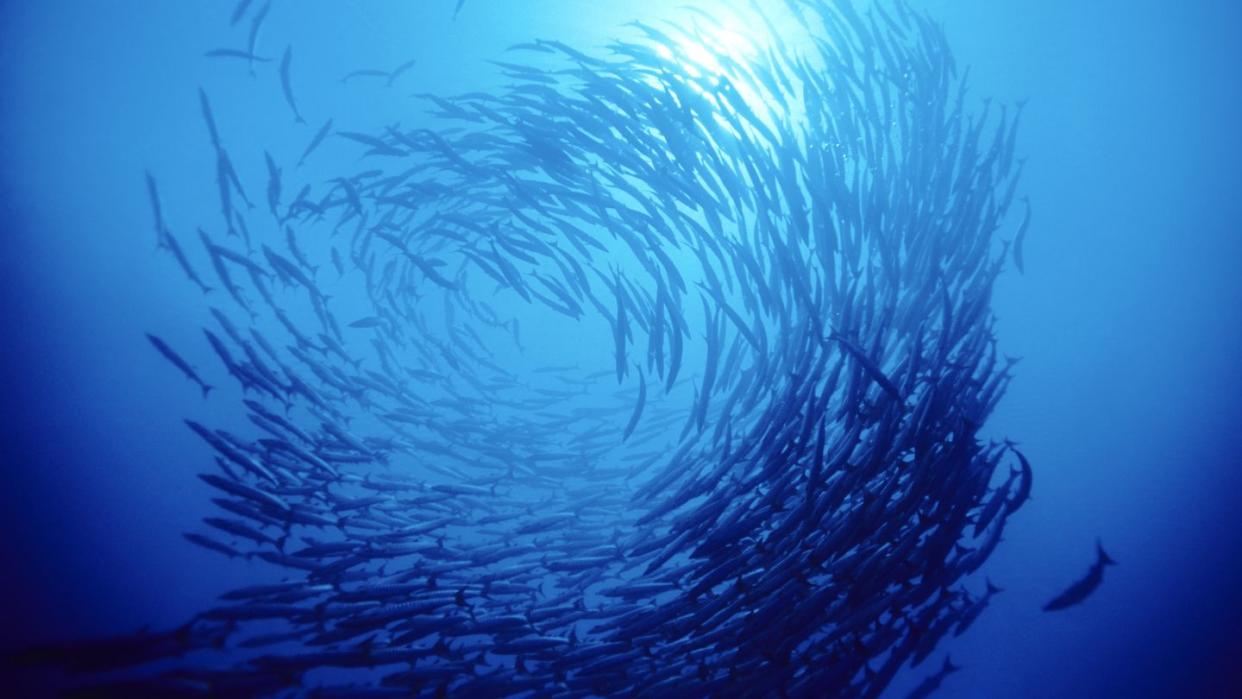Fish in Florida Keep Mysteriously Spinning Out of Control to Their Deaths

"Hearst Magazines and Yahoo may earn commission or revenue on some items through these links."
Dozens of Florida Keys fish species have grown sick in an oddly specific way since November of 2023.
Scientists are continuing to rule out what it could be, and will soon test the toxin ciguatera to see if it could be the source.
Algae carry natural toxins, which may harm fish in environmentally distressed reefs.
The Florida Keys are having a rough 2024, between the growing crisis of climate change and the bewildering depiction of them in the bad Jake Gyllenhaal remake of Road House. But, as biologist Bethany Augliere reports for National Geographic, the area has also had reports of dozens of species of fish observed swimming, seeming uncontrollably, in tight little circles downward. These reports have come in from the lower Keys all the way up to Miami, and the critically endangered smalltooth sawfish is one of the affected species. The reports have all come in since about November of last year.
In nature, many animals move in large circles as part of normal behavior—including humans, who tend to both walk and swim in large curves when they think they’re going straight. But these fish are swimming in small circles like a listing helicopter in an action movie, and this isn’t normal or healthy behavior. Though scientists don’t yet know what’s causing the phenomenon, they consider these fish to be ill.
Many dead fish have washed up on shore as well, including 22 of the endangered sawfish. These protected fish can grow up to 12 feet long, making it even more distressing to observe them suffering or dead on shore. They’ve been observed at 14 years old in the wild, and can live to 25 years of age in captivity. For scientists who study them, the 22 dead sawfish and up to 60 reported sick sawfish are both ecologically and personally important.
There’s only one species of sawfish in the mix here, but it’s one of just five on Earth. The only living examples are found in two groups: a larger one in Florida, and a smaller one in the Bahamas. There are dozens more species (not all from one family group) being affected by this strange sickness, though, which gives scientists some broader options for testing. They plan to use laboratory test fish to find out if a sample of ocean water from an affected area will make the lab fish swim in circles as well. It’s not pretty, but whatever’s affecting the fish must be isolated for the health of other fish, and for the health of animals—like humans—who eat fish regularly.
The Florida Fish and Wildlife Conservation Commission (FWC) says there’s no evidence of the usual suspected causes of fish illness like this—red tide from an algal bloom, low oxygen, high temperatures, or parasites. But it could be a toxin called ciguatera, potentially released by a regular quantity of algae rather than an unusual bloom. When scientists tested water from affected areas, they found higher ciguatera algae (called Gambierdiscus) about 25-33 times more than usual.
Augliere reports that this specific algae is more common in environmentally distressed reef areas. In 2024, it’s hard to find a reef area that isn’t at least somewhat distressed, and the Florida Keys are certainly experiencing some hardship of their own. Environmentally stressful factors include things like the coral bleaching that laregly stems from climate change, as well as human factors like overdevelopment near their reef areas.
The scientists will continue to separate out and test hypotheses for the sick fish in the Florida Keys. It could turn out to be the ciguatera, or it could be that a similar algae-induced event has happened outside of its usual conditions as part of a bloom. Since climate change is a factor here, this could also happen again—here, or in another place around the world. Finding out the culprit in the Keys could help other scientists if and when their fish populations also start to circle the drain.
You Might Also Like

